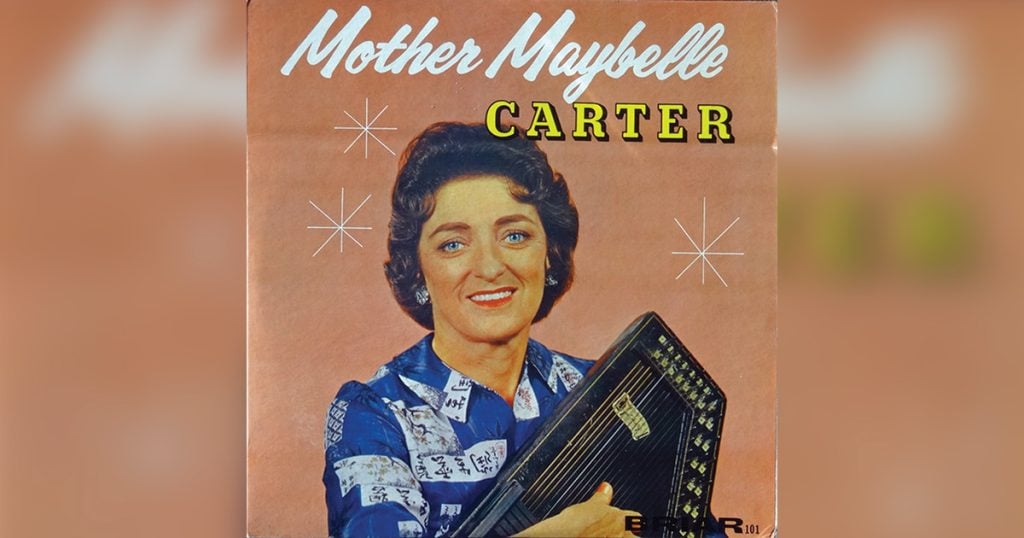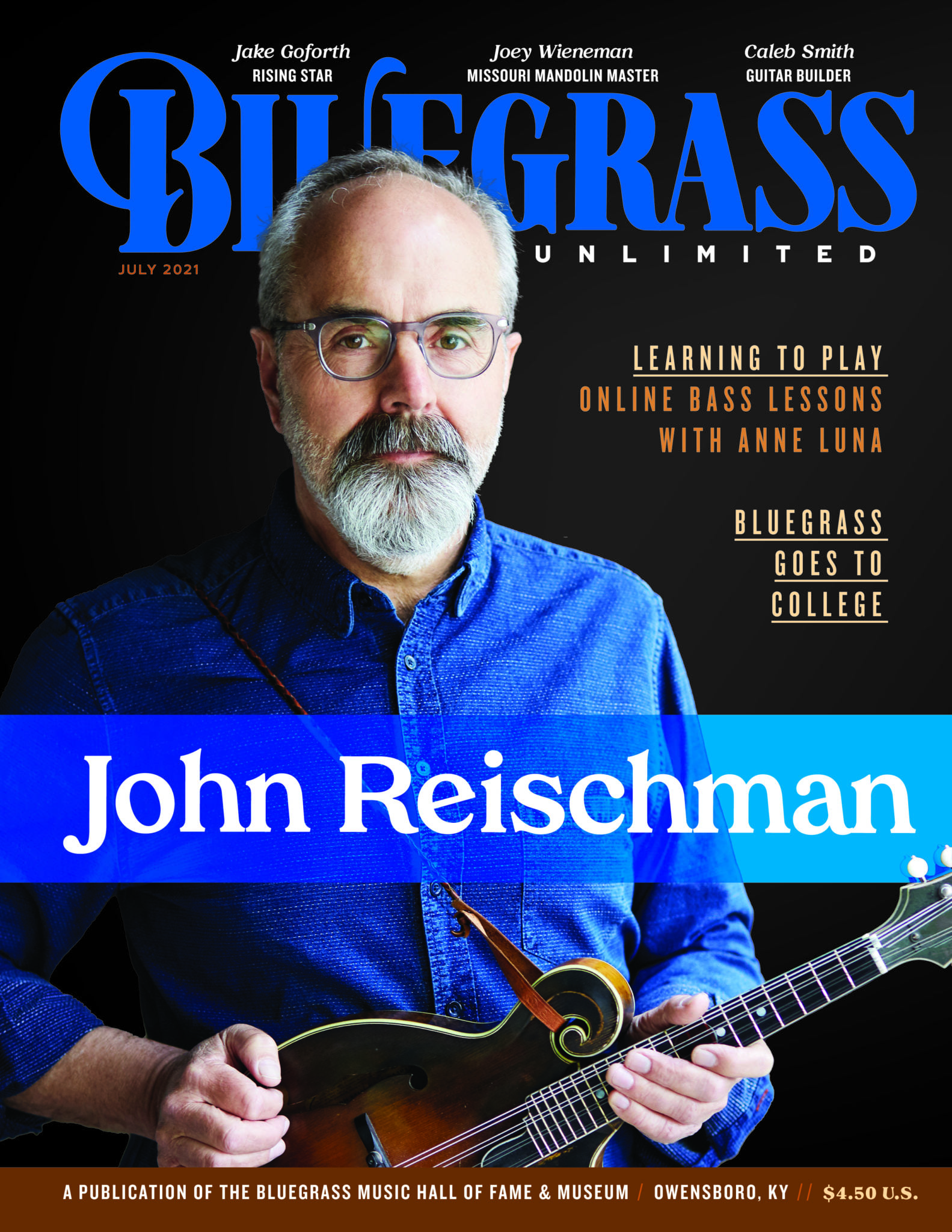Notes & Queries – July
Queries
Q: “Is it possible to find an old bluegrass song that I heard the other night and didn’t get the title? It starts out with her (a dog) waiting at the gate for him (her master) and his truck . . . when he pulls in, she followed him . . . and some other things about her being such a loyal dog. Thanks in advance.” Jim Jackson, via email.
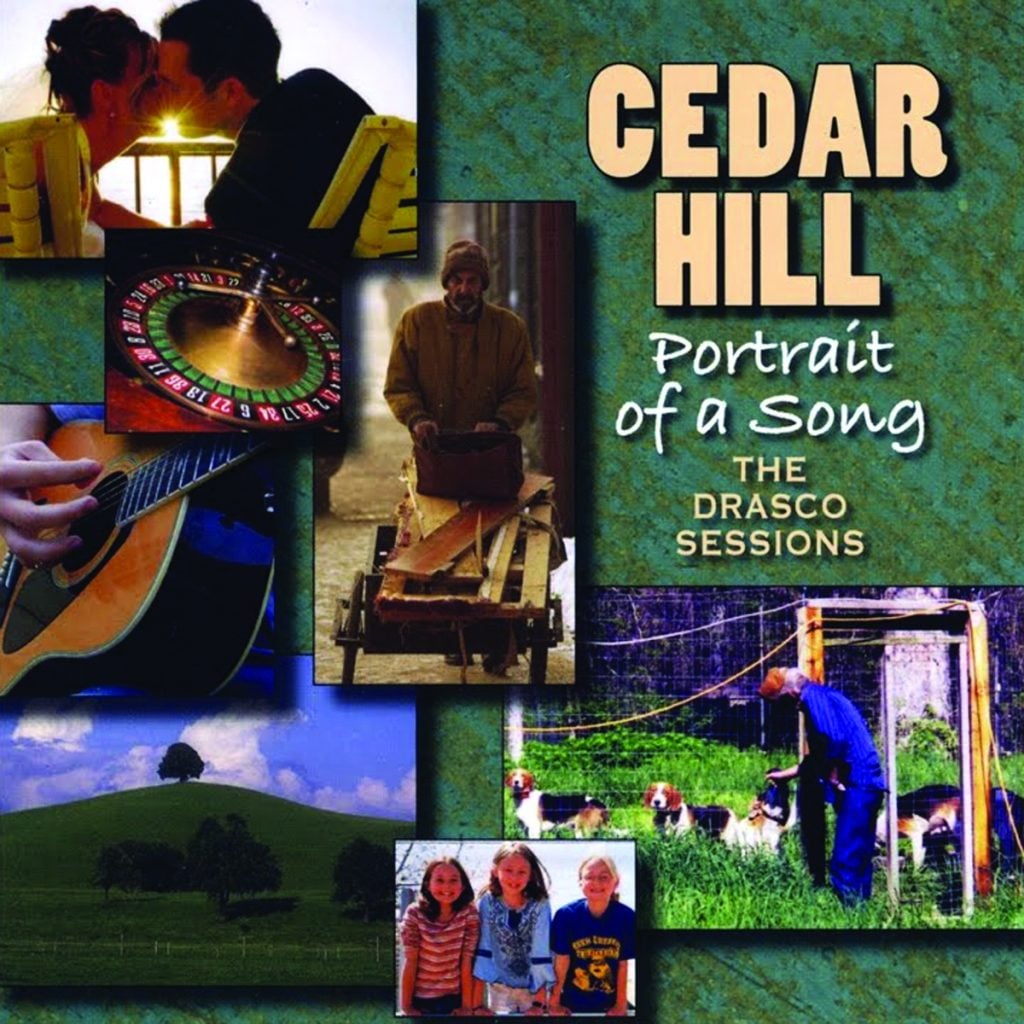
A: Chris Jones of SiriusXM Bluegrass Junction told us that “I’m almost positive that’s ‘Pearl’ by the Missouri band Cedar Hill. That has actually been one of the most requested songs in the history of the SiriusXM bluegrass channel.” The song appears on the group’s CD called Portrait of a Song – The Drasco Sessions (Hay Holler CD-1377).
Q: “Who performed with Doyle Lawson on his Only God album? The liner notes list no one.” Jay Deitz, via email
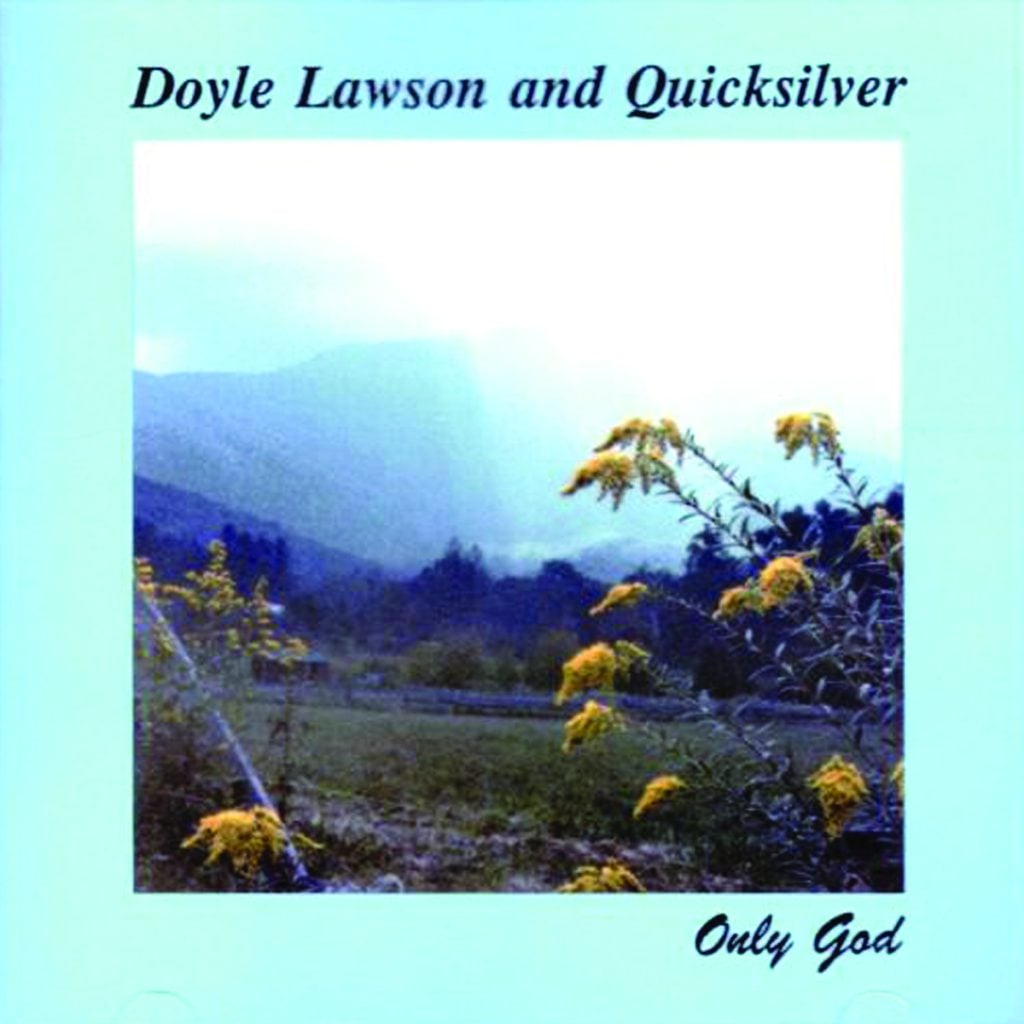
A: According to discogs.com, the personnel for this album is was follows: Doyle Lawson, mandolin and vocals; John Bowman, guitar and vocals; Jim Mills, banjo and vocals; and Shelton Feazell, electric bass and vocals. Special guest Jimmy Edmonds played piano and fiddle and also served as the disc’s audio engineer. The CD was recorded over a four-day period (May 31, June 1, 2, and 10) in 1991 and was released privately by Doyle Lawson on his own imprint (catalog number SSK-001).
Q: “If you know, please tell me the credits for guitar and bass in the LP below. Mother Maybelle Carter on Briar International Records (catalog number Briar 101). Thank you for your help.” Shin Akimoto, Japan
A: Following the dissolution of the Original Carter Family (Sara, Maybelle, and A. P.) in the early 1940s, guitarist/autoharp player Maybelle soldiered on with a group that included her daughters Helen, Anita, and June. They were mainstays of the Old Dominion Barn Dance in Richmond, Virginia, and made a series of recordings in the late 1940s and early 1950s for Columbia. The group landed at the Opry in 1951 but it would be nearly a decade before any new recordings were made.
Maybelle gained some renown in the early 1960s when she appeared on the Flatt and Scruggs album Songs of the Famous Carter Family. She even received billing on the front of the album cover. It was shortly after the release of this album that Briar Records produced an LP that was titled simply Mother Maybelle Carter. The first evidence of the disc’s availability was a January 1962 newspaper advertisement for a record shop in Danville, Virginia.
The album cover sported a photo of Maybelle cradling an autoharp. The album’s liner notes by longtime Peer Music executive Roy Horton touted Maybelle’s status as a country music legend and explained how “this collection of folk ballads and instrumental melodies [were recorded] under the direction of Paul Cohen, one of the greatest ‘sound’ men in the recording industry.” Cohen enjoyed a lengthy tenure at Decca Records as head of the label’s country music division; he oversaw many of Bill Monroe’s first sessions for that label in the early 1950s. Around 1960, Cohen launched Briar Records and used the Maybelle Carter album as the label’s debut release.
Maybelle alternated between playing the autoharp and her signature style guitar. Leading off was an autoharp version of “The Bells of St. Mary.” On May 28, 1962, Maybelle appeared as a guest, with Flatt and Scruggs, on the Grand Ole Opry television program that was hosted by T. Tommy Cutrer. With Earl Scruggs standing at her side, Maybelle played “The Bells of St. Mary.” The clip can be seen on YouTube. The tune evidently meant a lot to Maybelle as her recording of it was played at her funeral in 1978.
The bulk of the album consisted of remakes of songs that were recorded by the Original Carter Family and among the highlights were “He’s Solid Gone” and “Wildwood Flower.” Songs new to the Carter cannon were “Liberty Dance” (a fine autoharp rendition of “Liberty”), “Sweeter Than the Flowers,” and yet another autoharp solo called “All I Have of You” that featured Hawaiian-sounding cooing throughout by the Carter Sisters.
Unfortunately, there’s no definitive answer for who the backing musicians were on this album. The album’s notes tell that “vocal assistance is given by Maybelle’s two little belles, Helen and Anita.” Both women were proficient instrumentalists as well and it’s possible that they contributed with more than just vocals.
Although the original album has been out of print for many years, it recently became available as an on-demand and/or digital download release on Good Time Records.
Q: Years ago, as a youth in West Virginia, I used to see a musician by the name of Woody Simmons at fiddle contests. I’ve heard that he won over three hundred competitions. He and my dad used to drive logging trucks. Did Woody ever make any recordings? I’d love to hear his fiddling once again. David DeLauder, Vinton, Virginia.
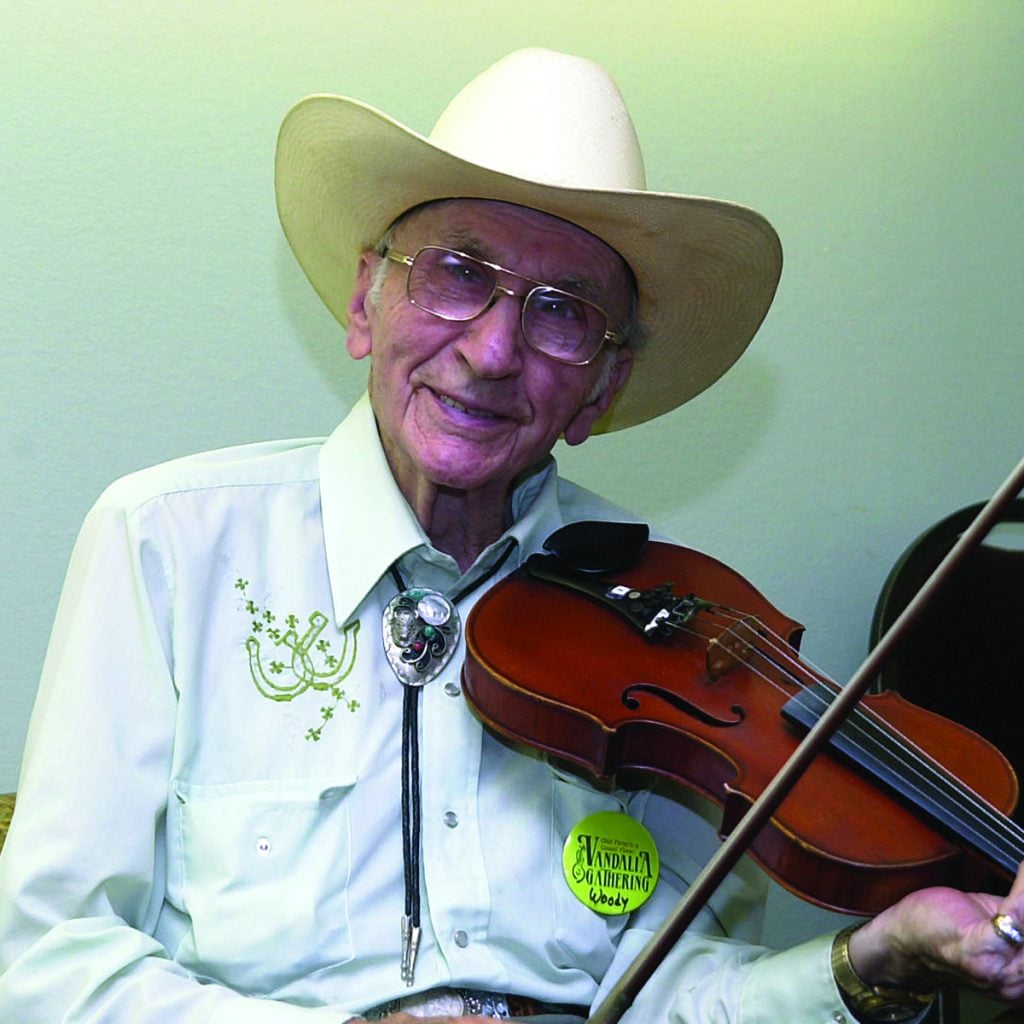
A: Woodford Harmon “Woody” Simmons (November 13, 1922 – June 3, 2005) was a legendary musician from Randolph County, West Virginia. Despite having a repertoire of some four hundred fifty tunes and sometimes working as many as seven nights a week at dances, he always maintained a day job. At fiddlers conventions, Woody was known to be a “fierce competitor.” A vintage clip on YouTube (“Woody Simmons 1950 Sally Johnson”) attests to his skill on the fiddle. But it wasn’t until 1979 that he released his first album, All Smiles Tonight (Elderberry ER 002, now out of print). That same year, Woody was profiled in a Goldenseal magazine article titled “Recollections of A Randolph County Fiddler” (later reprinted in the fine book Mountains of Music: West Virginia Traditional Music from Goldenseal). More recently, the Pocahontas Community Cooperative released a 2005 compact disc that was assembled from performances that Woody made for fundraisers at radio station WVMR. The disc, Woody Simmons Live at WVMR, features thirty-six tracks, many of which contain spoken introductions by Woody. Also available is an hour-long audio documentary called Double Geared Lightning; both discs are listed as being available on the Allegheny Mountain Radio website.
Over Jordan
Michael Allen “Big Mike” Dean
(October 4, 1956 – May 4, 2021)
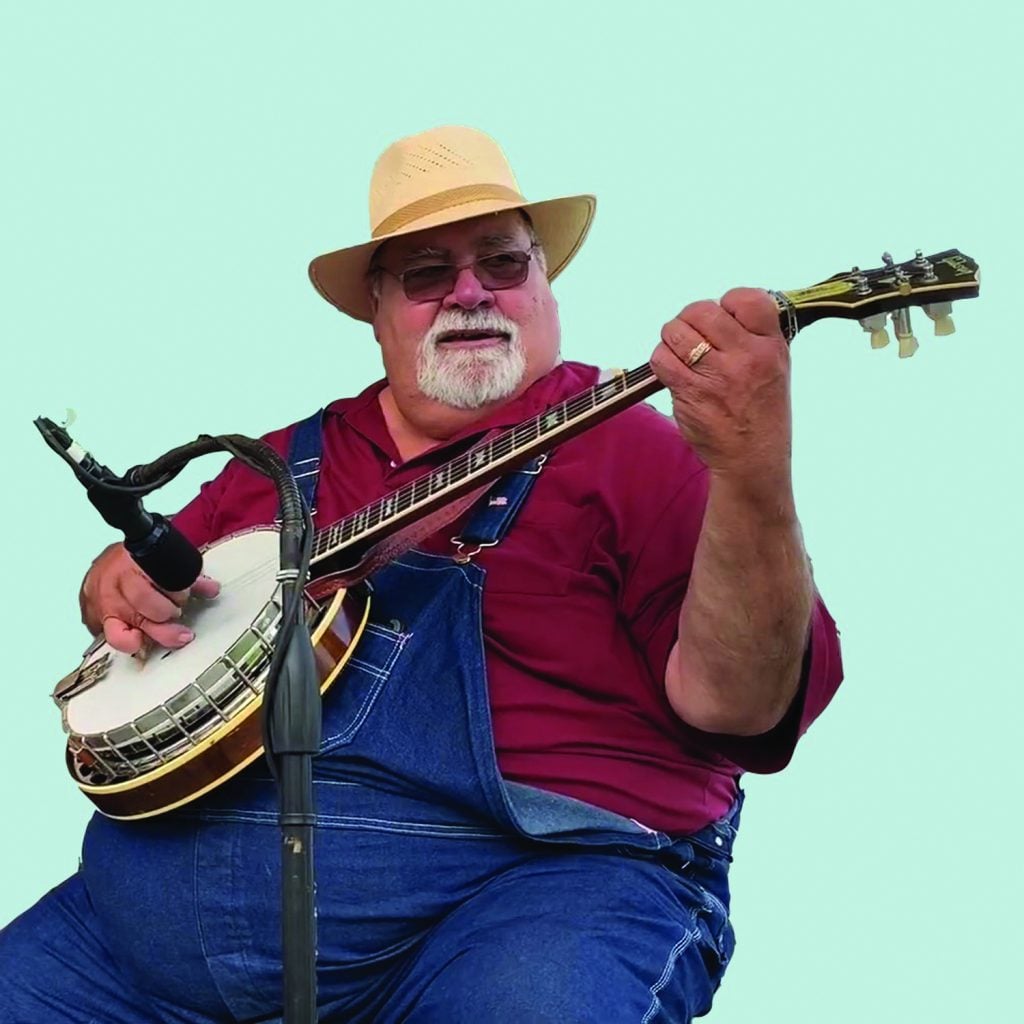
Michael Allen “Big Mike” Dean was a banjo player who was well-known throughout his native Ohio. He performed in a number of bands including Simple Tymes, Harbourtown, Mountain Furrow, and (since 2016) New Outlook. Mike was a fan of the music of Flatt & Scruggs and his own banjo style was described as “hard driving.” Since retiring from his day job, Mike concentrated on three passions: the banjo, camping, and shooting sports. Known for his friendly disposition, he was frequently sought out at festivals for good conversation, good jokes, and good banjo tunes. He and his wife, Kris, were well-known for their festival cuisine, including their popular Dean’s Beans. Contributions in Dean’s memory can be made to the American Heart Association.
Andrew Paul “Andy” Dye
(November 2, 1959 – April 26, 2021)
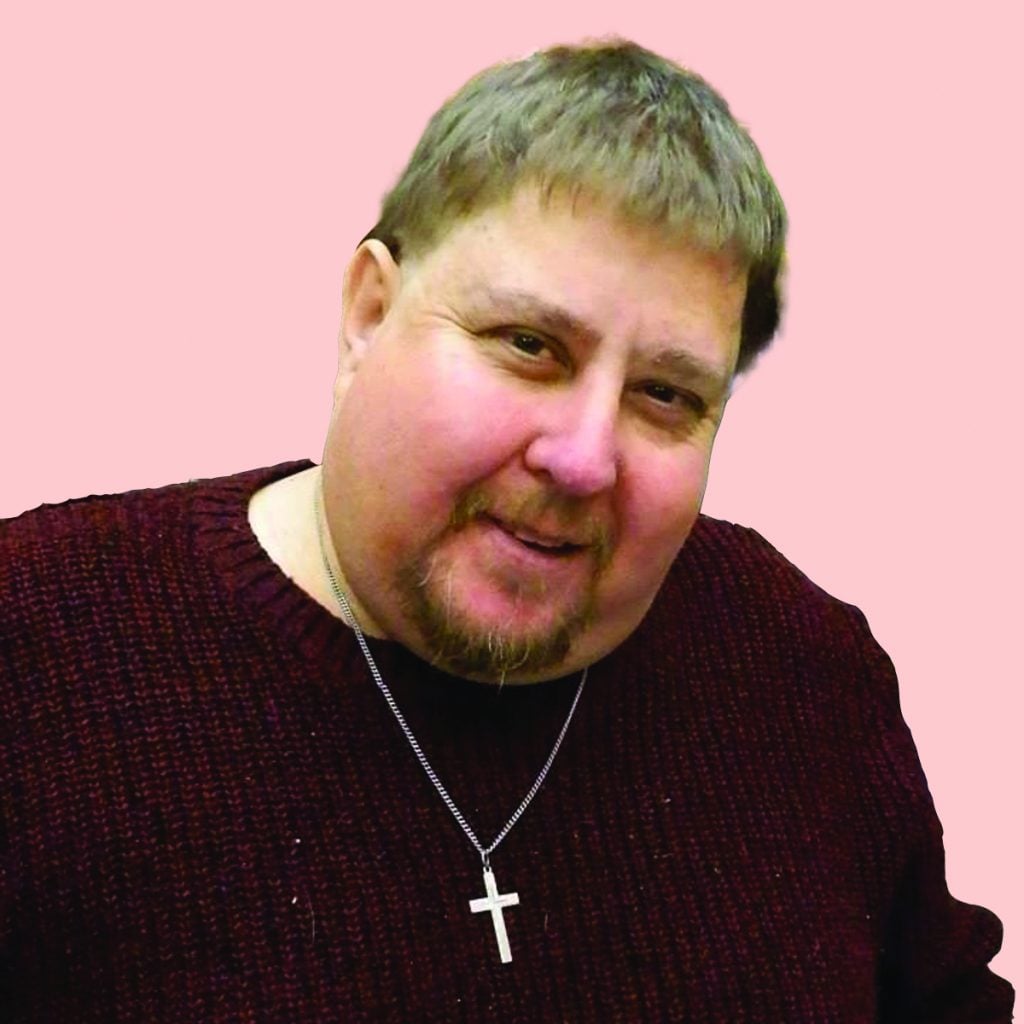
Andrew Paul “Andy” Dye was a bass player and harmony singer with a high tenor range. He began playing bluegrass in the early 1970s, around the age of thirteen. Although he grew up and spent most of his life in the mid-west, his most high-profile job was with the Georgia-based Gillis Brothers; he even moved to the Peach State during his tenure with the group, from 1989 until 1993. From 1993 until 1997, Andy did seasonal work as a performer Silver Dollar City in Missouri. During the same timeframe, he also played with a group called Midnight Flight. More recently, he performed with the Ozark Mountain Boys. The group’s promotional material touted Andy as “one of the premier singers and songwriters on the high tenor old-time brother-style duet numbers. Since 1995, he has largely been responsible for the resurgence and popularity of the old-style choreographed show in the Midwest.” Starting in 2009, a series of health issues left him disabled but on occasion he was able to sing with bands in public while seated in a wheel chair.
John Mitchel Hickman
(October 7, 1942 – May 11, 2021)
John Mitchel Hickman was an Ohio-born banjo player who later made his mark as a transplant to southern California. He released a solo album on Rounder in 1978, Don’t Mean Maybe, played banjo for television and film, and later teamed up with Byron Berline and Dan Crary for a series of critically-received instrumental albums.
John’s initial interest in music was with the guitar but soon switched when he discovered the banjo in 1957. A friend got him started with a pre-bluegrass two-finger style. A year or so later, a three-finger style player taught him a backward roll. It was a three-year process before he learned and smoothed out a forward three-finger roll.
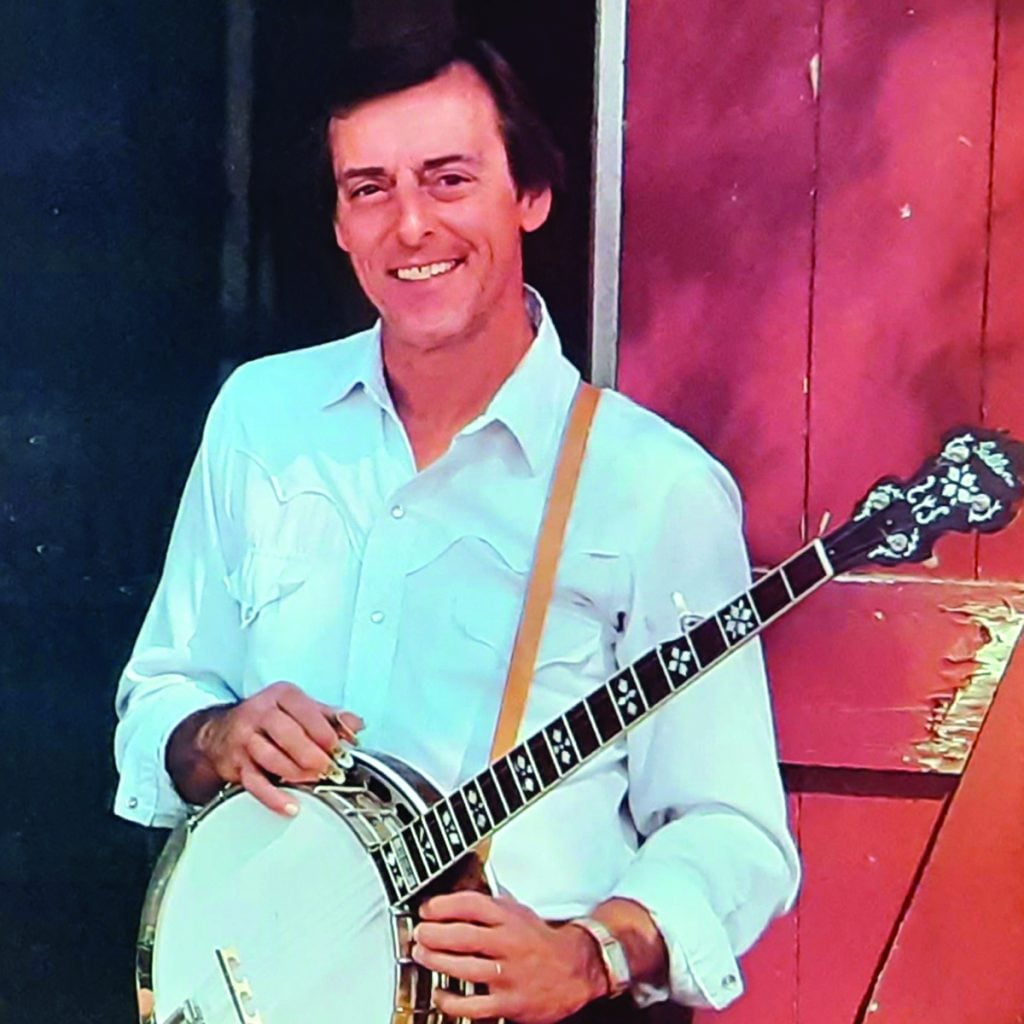
Shortly after graduating from high school (ca 1960) John played locally in the Columbus, Ohio, area with Bill Duncan and Don Sowards. He also played professionally with Red Allen and Frank Wakefield who were then members of the WWVA Jamboree in Wheeling, West Virginia. He eventually returned to Columbus where he teamed up with Robbie Robinson to form the Dixie Gentlemen.
John took time out from music when he joined the Marines in 1962. For the last six months of his enlistment, he was stationed in Quantico, Virginia, near Washington, DC. This put him back in touch with Red Allen and Frank Wakefield and introduced him to other area pickers such as Mike Auldridge and Ben Eldredge.
Following his discharge in 1964, John returned once again to Columbus where he teamed up with guitarist Landon Rowe and famed former Stanley Brothers sideman/mandolin player Pee Wee Lambert. The trio was short-lived and ended with Pee Wee’s passing a year later.
The Dixie Gentlemen reorganized with local legend Sid Campbell on guitar, Robbie Robinson on mandolin, and Chuck Cordle on bass. Tragedy struck when Robinson and Cordle were both killed in a place crash. A 1968 article in the Columbus Dispatch noted that John supplemented his Dixie Gentlemen income by teaching music and netted about $150 per week. The same article quoted John, a 25-year-old bachelor, as saying, “If you try to do it with a wife, you’ll find you don’t have enough time to devote to music.”
It was during this same period that John was the subject of a twenty-minute documentary film by Carl Fleischhauer called John Mitchel Hickman; it won second place in a National Student Film Festival. In reviewing the film, Neil Rosenberg reported that the film described “Hickman as a free spirit, a creative musician who lives in a part of Columbus ‘where you can have your own society,’ and ‘anyone can be anyone.’” This same period also found John performing locally with Earl Taylor.
In 1969, John relocated to southern California. It was there his career started to take off. For starters, he teamed up with his brother George and mandolin player Scott Hambly to form a group called Corn Bred. At a “bluegrass showcase” that was sponsored by McCabes, John met and became friends with notables such as Byron Berline and Alan Munde. Through Byron, John subsequently met Roland and Clarance White and John Hartford. He gained significant media exposure when he appeared on the Smothers Brothers Show. It was a combination of session work, teaching, and instrument repair work that kept John busy for the next several years. In a May 1975 issue of Bluegrass Unlimited, author Bruce Powell recapped what John felt were major influences on his own playing; it was “the ‘flashiness’ of Reno; the back-up techniques of Eddie Adcock; the ‘hard-driving’ right hand of Bill Emerson; and of course, the ‘bluesy’ chromatics of Bobby Thompson.”
In 1975, Byron Berline assembled a group known as Sundance. The band scored a major label release on MCA with their first album. While some felt the disc was over-produced, a more acoustic-friendly Live at McCabes appeared a year later on the Takoma label. The same period saw the release of John’s first, and only, solo album, Don’t Mean Maybe.
Sundance broke-up in 1978, but promoter Robert Tainaka booked remnants of the group – Byron Berline, Dan Crary, and John Hickman – for a tour of Japan. Despite not having worked as a trio before, the tour went well. In Masters of the 5-String Banjo, John deadpanned that the new trio was “not that bad; maybe we should see what we can do with it.”
The Berline-Crary-Hickman configuration was most active during the 1980s. The trio released nearly half a dozen albums including the self-titled Berline-Crary-Hickman in 1981, Night Run in 1984, Double Trouble (featuring Byron and John) in 1986, BCH (also in 1986), and Now They Are Four (with the addition of Steve Spurgin) in 1989. In 1984, the State Department sent the trio on a tour of Nepal, Tunisa, Algeria, and Morocco.
In the early 1990s, Berline-Crary-Hickman morphed into a group known as California. Starting in 1992, the group won the IBMA award for Best Instrumental Group for three years in a row.
In 1995, John moved to Guthrie, Oklahoma, where he taught music and did instrument repair at Berline’s Double Stop Fiddle Shop and also performed in the Bryon Berline Band.
By 2015, John battled both cancer and heart-related issues. His ailments forced him into musical retirement, in which he remained until his recent passing.
Lewis Allen Layton, Sr.
(November 21, 1959 – April 28, 2021)
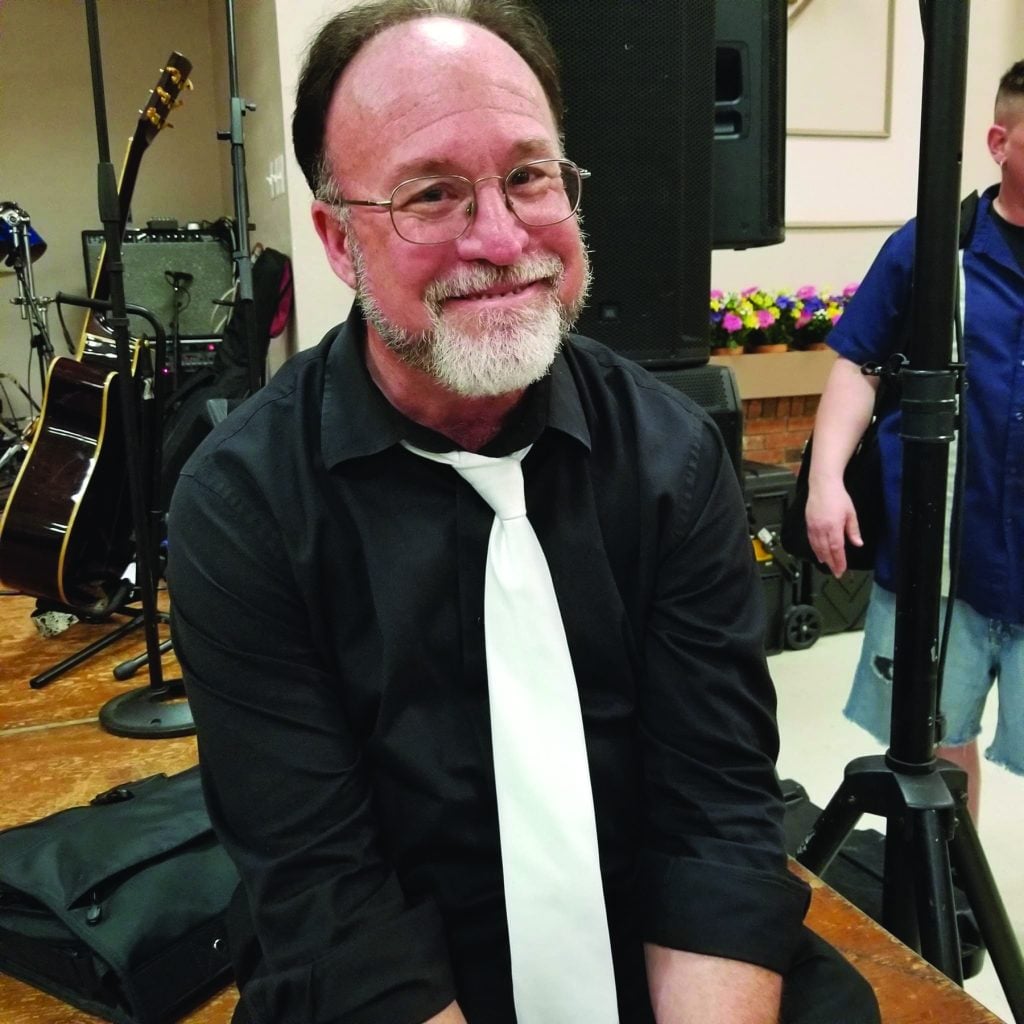
Jay Armsworthy submitted the following: “I wanted to pass along some information concerning the passing of Lewis Layton from Chambersburg, Pennsylvania. He was the bass player with Jay Armsworthy & Eastern Tradition. Prior to that he played bass for the Paul Adkins Band and other Pennsylvania area bands. Known for his distinctive black bass, his musical love went beyond bluegrass to barbershop chorus, gospel, and to rockabilly. He was a great friend, band mate, engineer, and an all-around nice person. We had just released a new CD on Patuxent Music.”
James Richard “Jim” Peva
(May 7, 1928 – May 5, 2021)
James Richard “Jim” Peva was a longtime friend of Bill Monroe who came to be known as a historian of Monroe’s music park in Bean Blossom, Indiana. Peva discovered Monroe and his music in 1961 when, as an Indiana State Police Training Division sergeant, he was tasked with securing entertainment for an invitational pistol match banquet. He and his family journeyed to the Brown County Jamboree (as the venue was known in those days) to meet and discuss with Monroe the possibility of his performance at the banquet.
Having never been to a concert of any kind, Peva was mesmerized by Monroe’s performance at the Jamboree and became a life-long bluegrass disciple. As a photographer, he captured countless images of Bean Blossom happenings on film. He also used a reel-to-reel machine to record many of the stage performances on tape. As a faithful attendee of Jamboree and festival events for over fifty years, he was often sought out by the press for interviews about Monroe and the park.
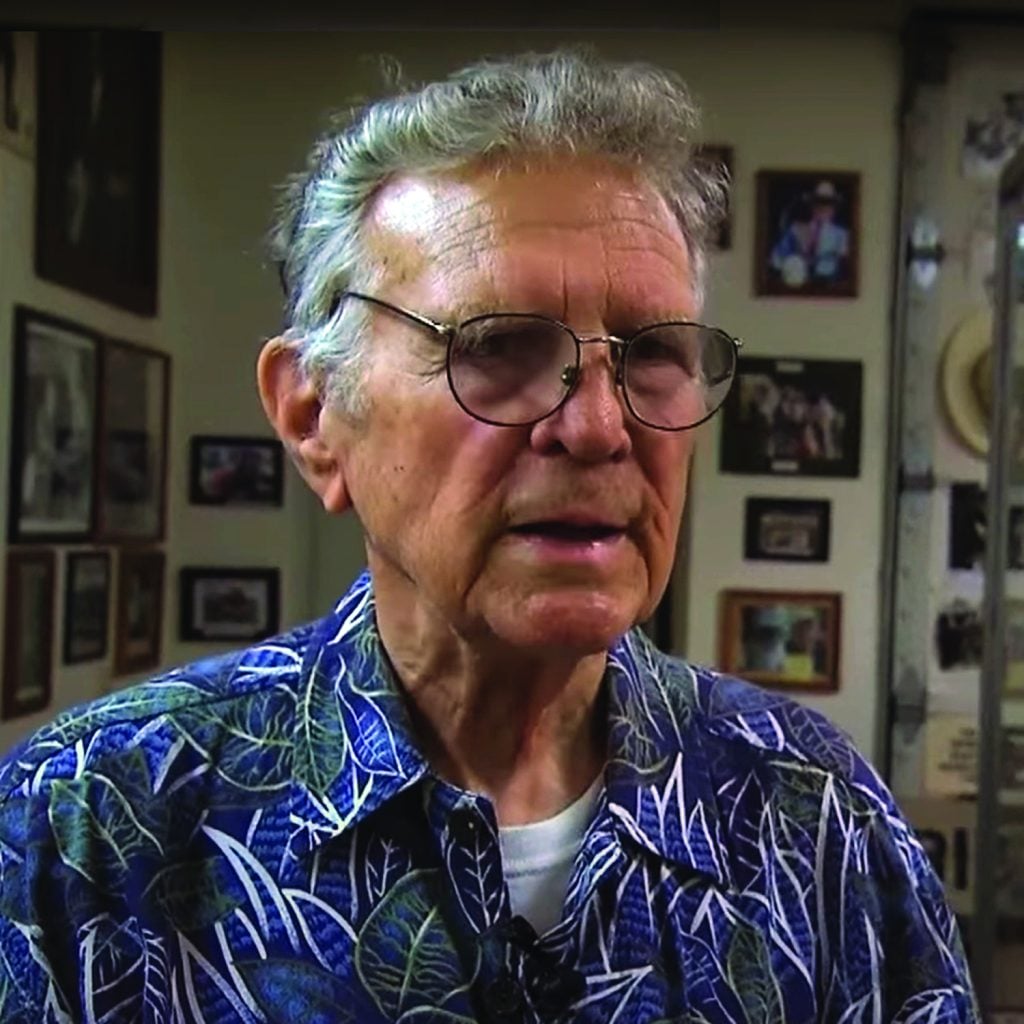
In 1964, Peva was part of a consortium that was organized to improve the operation of the Brown County Jamboree. Despite an initial flurry of activity and the best of intentions, the Brown County Music Corporation ceased operations less than a year after its launch. He continued as a volunteer at the park for many years, assisting with everything from selling tickets to clearing away debris.
In 1971, Peva retired from his position as a colonel with the state police and became Assistant Professor of Criminal Justice and Law at Indiana University–Purdue University Indianapolis. Concurrent with his new position as an instructor, Peva maintained his presence at Bean Blossom festivals. His family’s campsite became known as Peva’s Place and served as a welcoming center for festival attendees, both old and new.
More recently, Peva sought to honor the memory of Bill Monroe and in 2003 launched an initiative for the star’s image to appear on a US postage stamp. In 2006, he assembled a book of festival memories called Bean Blossom: Its People and Its Music. In 2008, he served on the Advisory Committee of the Bean Blossom Brown County Jamboree Preservation Foundation.
